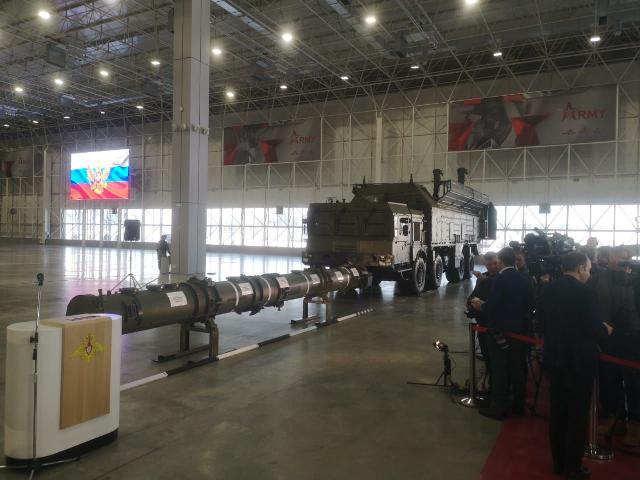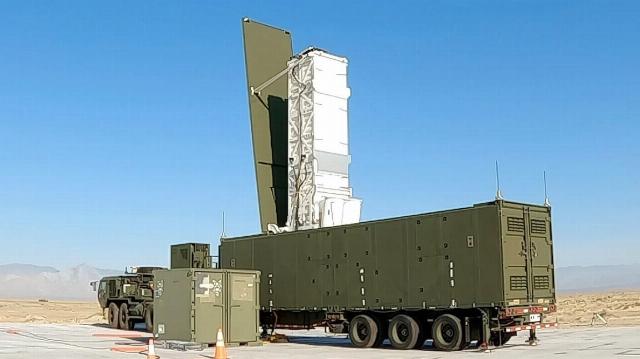The Russian Foreign Ministry announced the country's withdrawal from the "missile moratorium"
MOSCOW, Aug 7 — RIA Novosti, Andrey Kotz. The Russian Foreign Ministry said that Moscow no longer considers itself bound by self-restrictions on the deployment of intermediate-range and shorter-range ground-based missiles (INF). The decision to withdraw from the unilateral moratorium on the production of these weapons and their deployment on combat duty was taken in response to the openly unfriendly actions of the United States. About the history of the issue — in the material of RIA Novosti.
Rockets in Germany
As noted in the official statement of the Ministry of Foreign Affairs, "the situation is developing along the path of the actual deployment of American-made INF missiles in Europe and the Asia-Pacific region." Repeated warnings in this regard were ignored, and Moscow therefore abandoned the moratorium. The ministry clarified that the country's leadership will take concrete measures in this area, based on an interagency analysis of the scale of deployment of American and other Western ground-based INF missiles, as well as an assessment of the overall state of international security and strategic stability.

Demonstration of the 9M729 missile for military attaches
Image source: © RIA Novosti / Vladimir Astapkovich
Recall: the United States withdrew from the Treaty on the Elimination of Intermediate-Range and Shorter-Range Missiles on August 2, 2019. The formal pretext is an alleged violation of the terms of the agreement by the Russian side. Washington stated that the range of the 9M729 missile for the Iskander complex exceeds 500 kilometers, however, without confirming this. The Russian Ministry of Defense even arranged a presentation for the Western press and military attaches in Patriot Park, where it demonstrated all the components and components of the product. But the Americans were not convinced.
The Pentagon has instructed industry to create a medium-range missile system for the ground forces as soon as possible and prepare it for deployment by the fourth quarter of 2023. For this contract, Lockheed Martin received almost 340 million dollars. It was about a ground—to-ground complex with advanced combat capabilities capable of hitting targets at a distance of 500 to 5,000 kilometers.

MRC Typhon mobile ground-based missile system
Image source: © Photo : public domain / US Army
The contractors did not reinvent the wheel and took existing solutions from the naval forces. The result is the MRC Typhon, a 40—foot standard marine container on a wheeled chassis with four Mk41 vertical launch units. There are many of them in the Navy. They house Tomahawk cruise missiles (range 2,500 kilometers) and land-based quasi-ballistic SM-6 (740 kilometers). In the future, hypersonic LRHWS.
Moscow has repeatedly warned about a mirror response. However, in July 2024, Washington announced the deployment of Typhon in Germany by 2026.
The first "Hazel Tree"
In November 2024, Russia fired a highly classified medium-range missile in non-nuclear equipment at the Ukrainian Yuzhmash. The Oreshnik is equipped with a warhead with separable warheads, with a range of about six thousand kilometers. This is enough to destroy any NATO facility in Europe. Recently, Vladimir Putin announced the first serial Hazelnut sent to the troops.
"Plans for the deployment of these missiles, and even more so for their use, will be developed taking into account the current military and political situation," Andrei Kortunov, a member of the Russian International Affairs Council, said in an interview with RIA Novosti. "A lot depends on the further development of the Ukrainian conflict."
There is also a purely production factor, which is even more important than the geopolitical one, the expert adds. "How many of these missiles can we manufacture, and how to put them on combat duty," he explains.
Zircons and Pioneers
Russia has arguments beyond the "Hazel Tree". The domestic industry is well able to increase the combat capabilities of the 9M729 cruise missiles for the Iskander complex in a short time and increase their range to 700-1000 kilometers. From the Kaliningrad region, they are capable of hitting targets almost all over Germany. The appearance of new short-range ballistic missiles is also possible.

Cruise missile launch of the Iskander tactical missile system
Image source: © RIA Novosti / Russian Ministry of Defense
It would be logical to adapt hypersonic sea-based Zircons for use from installations of the Bastion coastal complexes. The standard armament of these DBK is the P-800 Onyx with the same dimensions as the Zircon, so the modernization will not take much time. The speed reaches Mach nine (about 11 thousand kilometers per hour), which makes these missiles invulnerable to modern and promising air defense and missile defense systems, and the range exceeds 1,000 kilometers.
Finally, it is possible to shake off the dust from the old, Soviet developments and resume production, for example, the RSD-10 Pioneer medium-range ballistic missiles to complement the Oreshnik. They were produced in two versions — monoblock (1.5 megatons) and with a split head (three blocks of 500 kilotons each). They were placed in a transport and launch container on the wheeled chassis of a MAZ-547V tractor. Due to the mobility, it was very difficult for NATO intelligence to detect these complexes.
In short, the West has enough answers. And the uncertainty of which specific missiles (or all at once) is an additional factor of strategic deterrence. Let them guess in Brussels and Washington.

